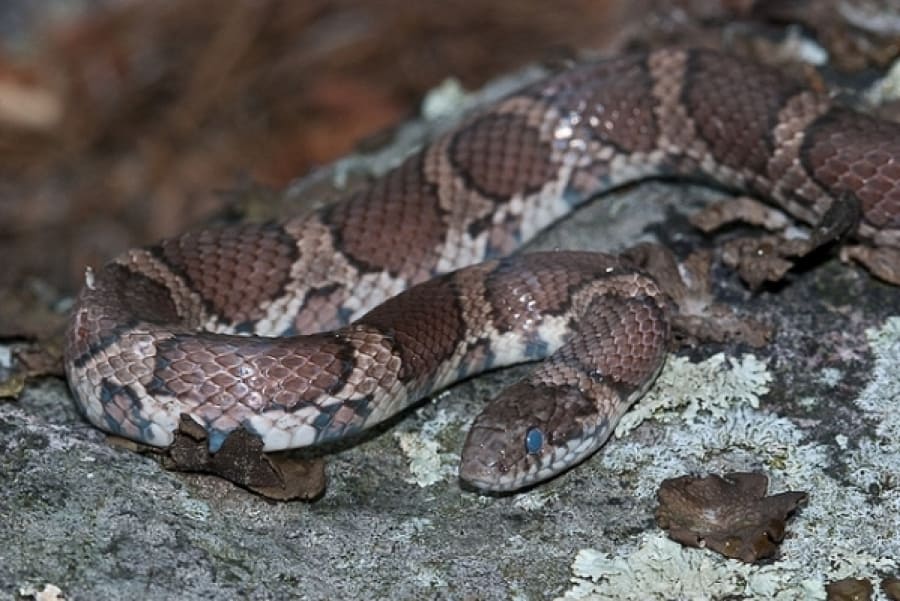
These behaviors may deter some predators.

It also discharges a pungent fluid from its cloaca as a warning. Central plains milksnakes are fairly common in several midwestern states like Texas, Colorado, Oklahoma, Kansas, and Nebraska. When threatened, this snake vibrates its tail creating a sound reminiscent of a rattlesnake. Scientific name: Lampropeltis triangulum gentilis The western milksnake, sometimes called the central plains milksnake, is found in Central and Southeast Oklahoma as well as in the panhandle. Just before and after hibernation, they can be seen together basking in the sun. The only time these snakes are found in groups is during hibernation. They typically stay hidden under rotting logs or damp trash. Milk snakes are a solitary species rarely seen in the open during the day, but they can often be spotted crossing roads at night. Needless to say, milk is not a component of any snake's diet-all snakes are carnivorous. The snakes, drawn to the mice in the barn, were convenient culprits. This myth probably began when farmers sought some excuse for why a cow was producing less milk than usual. The common name, milk snake, originated from a belief that these snakes milked cows. Many milk snake subspecies, including the Sinaloan milk snake, exhibit aposematic mimicry-their color patterns resemble those of the venomous copperhead or coral snake. The Sinaloan milk snake is not venomous, but its bright colors act as a false advertisement to potential predators. Its red brands are broader than those found in other subspecies, though it has similar coloration to the coral snake found in the same area. Common Name: Honduran milksnake Kingdom: Animalia Phylum: Chordata Class: Reptilia Order: Squamata Family: Colubridae. The Sinaloan milk snake has red bands separated by smaller black and yellow bands. As a member of the Kingsnake family, Sinaloan Milk Snakes possess some immunity to the venom of the venomous species they consume.There are 25 different subspecies of milk snakes known throughout their geographic range, all with slight color variations. Range: Sinaloan Milk Snakes are found in the Mexican states of Sonora, Sinaloa, and Chihuahua.ĭiet: Sinaloan Milk Snakes are constrictors and consume a wide variety of prey in the wild, including reptile eggs, lizards, small mammals, and other snakes. Habitat: Dry, arid, and rocky semi-desert environments. Scientific name Lampropeltis triangulum Status Special Concern Reason for designation This large, non-venomous snake continues to be relatively widespread in southern Ontario and southwestern Quebec, but has suffered localized declines concurrent with expanding urbanization and intensification of agriculture. Lifespan: These snakes can live up to 20 years in captivity. The Sinaloan Milk Snake closely resembles the venomous Eastern Coral Snake. They are non-venomous, though they display what is known as aposematic mimicry – color patterns resembling that of a venomous animal. Photo: Johnathan Dosterĭid you Know? The common name “milk snake” originated from the false belief that these snakes drank cows’ milk.ĭescription: Sinaloan Milk Snakes have red bands that are separated by smaller black and yellow bands.

The Eastern Milksnake occupies a wide variety of habitats. He serves an ambassador for snakes in our education programs, acting as a bridge in our programming to connect people with snakes and teach them about our local species, such as the Eastern Milk Snake. The Milksnake, Lampropeltis triangulum, is one of six species of kingsnake found.

We acquired Sonora in 2017 as an adult snake after he was relinquished by his previous owner.


 0 kommentar(er)
0 kommentar(er)
